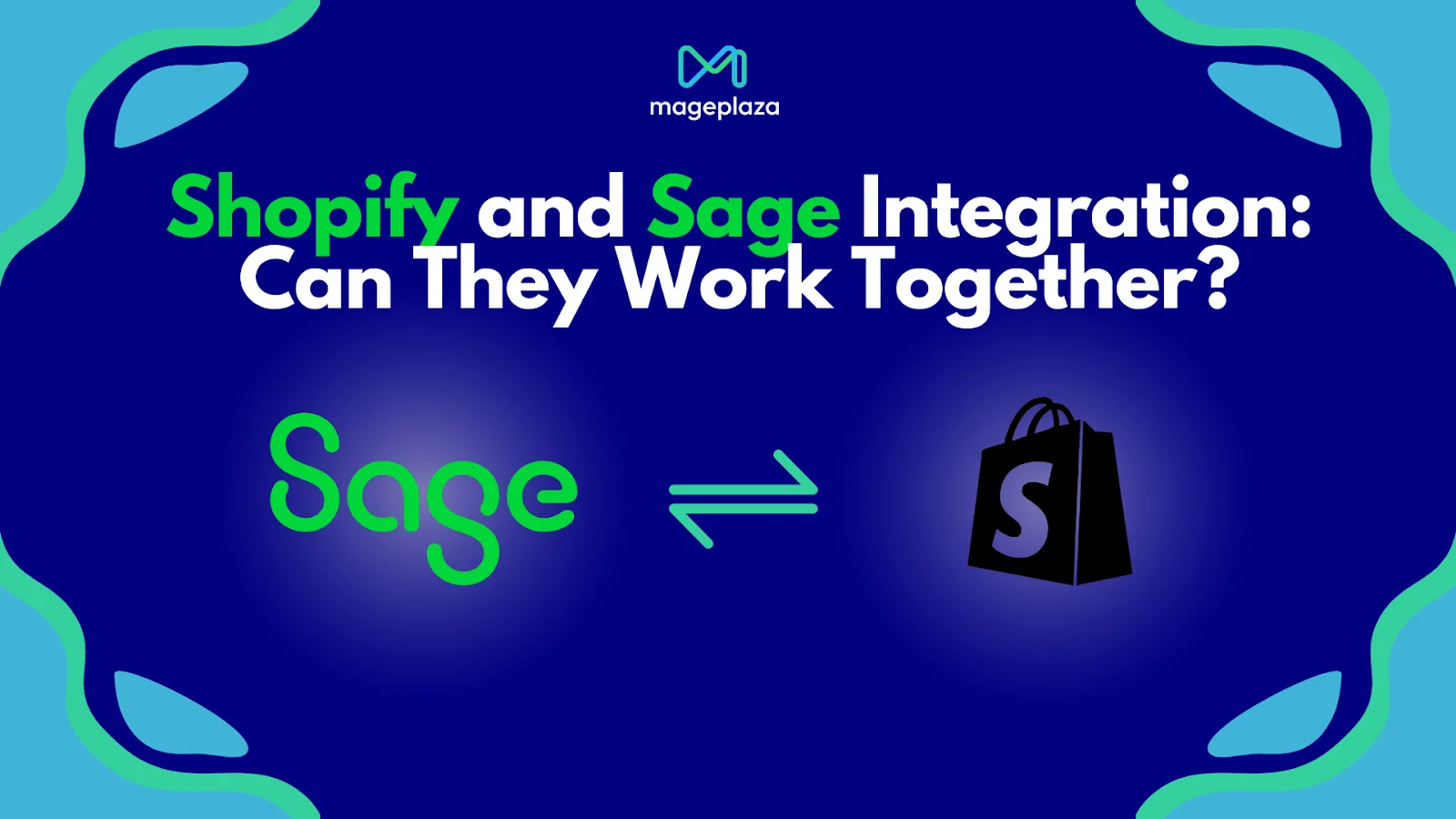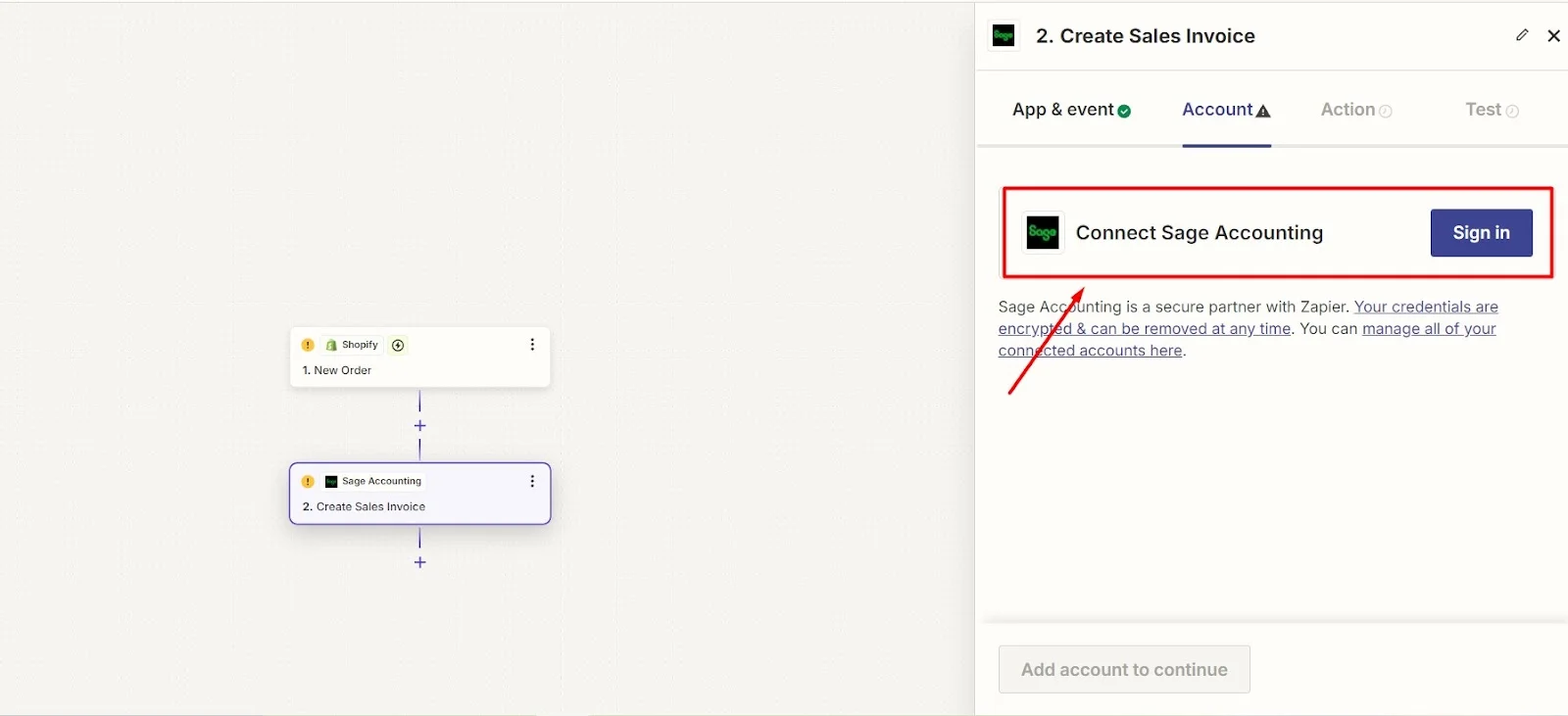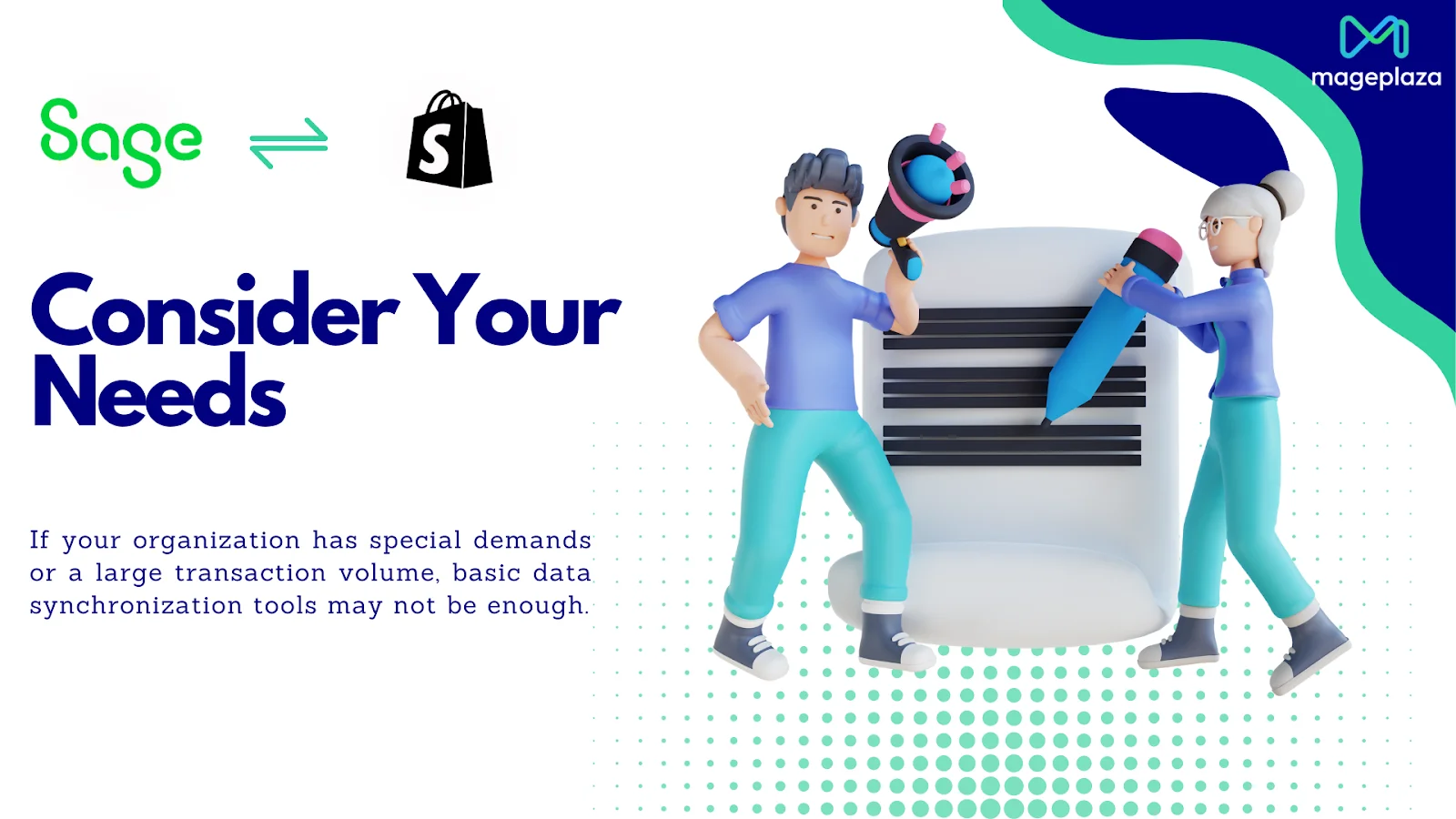How To Integrate Shopify With Sage? Full Guide [2025]
Summer Nguyen | 03-17-2025
![How To Integrate Shopify With Sage? Full Guide [2025]](https://cdn2.mageplaza.com/media/blog/sage-shopify-integration/cover.webp)
By linking their e-commerce platform with thorough accounting software, integrating Shopify with Sage in 2025 is a good way for companies trying to simplify their operations. This action will help companies improve data transfers, lower hand-off mistakes, and guarantee real-time sales, inventory, and more! It also saves time and helps you make better decisions because this link gives you correct financial information.
This article from Mageplaza will help you through the steps to smoothly integrate Shopify with Sage. Our tutorial will address what you need to know to have your systems cooperate effectively. With the right tools and tips, you’ll have your Shopify and Sage platforms connected in no time, helping your business grow smarter and faster.
Shopify and Sage Integration: Can They Work Together?

Yes, Shopify can integrate with Sage. However, it requires a third-party app or tool as there’s no direct integration between the two platforms. These third-party apps make it easier to send important data from Shopify to Sage, like sales, customers, and payments. This speeds up financial tasks and cuts down on the amount of data entry that needs to be done by hand.
Some popular ways to integrate are with specific e-commerce accounting automation tools and data syncing apps, which come with different levels of features and prices.
Top 5 Benefits of Shopify Sage Integration You Can’t Ignore!

Integrating Shopify with Sage gives you a lot of great benefits that can make your online business much better. These are the five best things about this integration that you can’t miss:
1. Automated Data Syncing
One of the most significant benefits of integrating Shopify with Sage is the automation of data transfer between your e-commerce store and your accounting software. Sales data, inventory levels, customer information, and financial records are all automatically synced in real-time. This automation reduces manual data entry, minimizes errors, and makes sure that your financial reports are always up-to-date, allowing you to make informed decisions quickly.
2. Enhanced Inventory Management
With Shopify Sage integration, you gain better control over your inventory. Sage provides detailed insights into stock levels, enabling you to manage inventory more efficiently. Whether you’re dealing with multiple warehouses or a single stockroom, this integration helps you avoid stockouts or overstocking, improving customer satisfaction and reducing storage costs.
3. Financial Reporting Made Easier
The integration allows for seamless financial reporting, as all your sales and expense data from Shopify are directly fed into Sage. This means you don’t have to do any hand checks to make correct financial records, keep track of cash flow, and keep an eye on how your business is doing. It’s a game-changer for maintaining financial health and compliance.
4. Time and Cost Savings
By automating routine tasks and reducing the need for manual data entry, Shopify Sage integration saves both time and money. Your team can focus on more strategic activities rather than getting bogged down by repetitive administrative work. This efficiency leads to cost savings, which can be reinvested into other areas of your business.
5. Improved Your Customer Experience
An integrated system makes the experience of your customers much better by giving them accurate and up-to-date information about what products are available, how their orders are progressing, and when they will be delivered. Customers are less likely to be confused when they can easily see if a product is in stock, keep track of their orders in real time, and know exactly when they can expect delivery.
How To Integrate Shopify With Sage?
What to Do Before Integrating Shopify With Sage?
Setting up an integration between Shopify and Sage requires a third-party tool, as these platforms don’t natively connect. The process is straightforward, especially with the right features. Here’s how you can get started.
You have two primary options: data syncing apps and eCommerce accounting automation apps.
Method 1: Data Syncing Apps

Tools like Zapier can link Shopify with Sage, automating data transfer between the two. For example, when a sale is made on Shopify, Zapier can automatically create a new invoice in Sage. This option is flexible and often cost-effective but may have limitations, especially for complex or high-volume Shopify stores. It might not handle every transaction type or capture detailed tax information.
Method 2: E-Commerce Accounting Automation Apps
These specialized apps are designed to meet the specific needs of Shopify stores, offering more robust features. They can support payment gateways, handle split-month entries, and manage large volumes of orders without overloading Sage. They also provide more comprehensive support, which is valuable if you encounter specific accounting or data syncing issues.
Feeling confused and need a real expert to optimize this process? Shopify experts with years of experience are ready to help you! Click now!
Hire Shopify Experts/Developers
Make your dream business come true with the help of our Shopify experts/developers!
Learn moreNow that you have the finest tool, let’s move on to the tutorial!
Step 1: Install the Integration Tool
In this article, we will perform the steps on Zapier for you to easily visualize! At Zapier on Shopify App Store, click “Install” to download it to your Shopify store:

Step 2: Sign Up and Connect Accounts
- After installing the apps, let’s create an account with your chosen integration tool.

- Log into both your Shopify and Sage account through the integration app. This connection allows the tool to access and transfer data between the two platforms.

Log into your Shopify accounts


Log into your Sage accounts
Step 3: Configure Data Syncing
Next, you will set up the parameters for how you want data to be synced. For example, you might configure the tool to automatically generate invoices in Sage whenever a new sale is made in Shopify. Customize the settings to match your business needs, such as syncing inventory levels, sales, and customer information.

Step 4: Test the Integration
Before fully committing, you should run a few test transactions to make sure that data is being correctly transferred from Shopify to Sage. Check that invoices, inventory updates, and other data appear accurately in Sage. You should also make adjustments as needed based on the test results.
Step 5: Monitor and Maintain
Once everything is set up and tested, you have to monitor the integration regularly to ensure it continues to function smoothly. Always update the integration settings if your business processes change or if you encounter any issues.
Important Note: Consider Your Needs

While generic data syncing apps are a good start, they may not meet all your needs if your business has unique requirements or handles a high volume of transactions. In such cases, investing in a specialized eCommerce accounting automation app might be more beneficial in the long run.
FAQs
1. What types of data can be synced between Shopify and Sage?
When integrating Shopify with Sage, you can sync various types of data, including sales transactions, inventory levels, customer information, and financial records. This includes order details, product quantities, pricing, and tax information.
The integration tool you choose will determine the extent of data synchronization, so it’s important to select one that meets your specific needs. Customizable settings allow you to tailor the data flow to manage only relevant information is transferred and accurately reflected in both systems.
2. Are there any limitations to Shopify and Sage integration?
While Shopify and Sage integration offer many benefits, there are some limitations to be aware of. For example, data syncing tools might struggle with handling complex transactions or large volumes of orders.
Some integrations may not support specific features, like detailed tax calculations or multi-currency transactions. It’s essential to evaluate the integration tool’s capabilities and choose one that aligns with your business requirements to avoid potential issues.
3. How secure is the data transferred between Shopify and Sage?
Data security is crucial when integrating Shopify with Sage. Reputable integration tools use encryption and secure data transfer protocols to protect your information during synchronization. However, it’s important to review the security features of the integration tool you choose and ensure that it complies with industry standards.
4. Can I integrate Shopify with multiple Sage accounts?
Integrating Shopify with multiple Sage accounts can be complex and might require additional configuration. Most integration tools are designed to connect Shopify to a single Sage account, but some may offer features to handle multiple accounts or companies. If you need to sync data with more than one Sage account, consult the integration tool’s documentation or support team to ensure compatibility and proper setup.
5. What should I do if I encounter issues with the Shopify-Sage integration?
If you encounter issues with the Shopify-Sage integration, start by checking the integration tool’s documentation and support resources for troubleshooting tips. If the problem persists, contact the support team of the integration tool for assistance. Regularly updating both Shopify and Sage software, as well as the integration tool, can also help resolve and prevent issues.
Bottom Line
Smartly integrating Shopify and Sage will change how your business works. Whether you choose integration tools, pre-built links, or custom workflows, pick the one that works best for your business and its growth plans. Accurate data mapping makes sure that your e-commerce platform and financial system work together perfectly.
Through this teamwork, better choices are made and clients have better encounters. Don’t forget that good integration isn’t just about technology; it’s also about helping your business grow. So, look into the options, use them on purpose, and see how much more productive you are!







